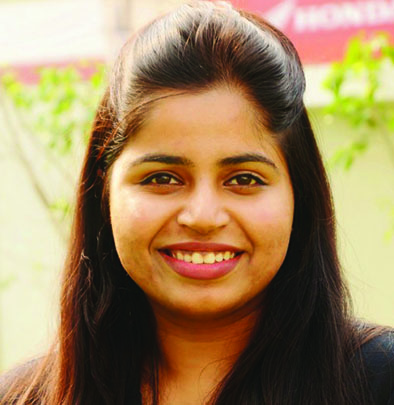Why mobile wallets might work for ASHA – And many others
by Vartika Shukla
May 15, 2014
4 min
Mobile wallets are emerging as a promising business potential, even for low-income customers with even lower stored value in their accounts. Authors here explores the possible solutions.
It is 6 A.M. on a cold winter morning in rural northern India and Sangeeta Devi, age 40, is already at work. She is an ASHA (Accredited Social Health Activists) worker in Patna, Bihar, one of India’s poorest states. Sangeeta’s responsibilities involve ensuring every child is vaccinated and every pregnant woman receives the medical care she needs. Often, against the will of the male head of household, she works long hours, extending well into the night, without an escort home (which can be dangerous in Patna), and she seldom gets paid on time. These all make a difficult job more so, but her real problem, the one she worries about most, is withdrawing small amounts of money from her bank.
A widespread dilemma
MicroSave is well aware of the cash-withdrawal and the underlying technology and business issues all rural bank branches and their clients must cope with—in India and in the many other developing areas around the world. Sangeeta’s situation is, unfortunately, one we see all too often in our fieldwork and report in our blogs and research papers.
Her bank branch is 12 km from where she lives, so she needs a day off work, up to Rs.820/$13 in missed opportunity costs, and ~Rs.60/$0.98 for the journey. Significant sums for her (she earns Rs.1,500 – 2,500 in a month but never receives it on time). Once she has finally arrived at her branch, the queues are long, the bank staff can be rude and unhelpful, and the IT servers and other links governing her withdrawals frequently fail. Too often, she returns home without funds.
So she does what any of us would do in similar circumstances: if and when her money is actually available for withdrawal, she takes it out in one lump sum. In her opinion, her small savings are better housed elsewhere, not at her bank. (MicroSave’s series on savings risks in India provide extensive background and research on this topic.)
An Emerging Solution
The current favorite “solution” to all the above is a mobile wallet, an electronic account held on a mobile phone that can be used to store (or save) money and to make transfers or payments to participants in the same or partnering systems. These wallets can also offer promising business potential, even for low-income customers with even lower stored value in their accounts, from the bank’s point of view and from mobile operators’ as well. The recently released 2013 GSMA Mobile Money Unit (MMU) State of the Industry report and the State of Mobile Money Usage are brimming with upbeat statistics and projections worldwide.
And, in the glossy poster and brochure, mobile wallets would seem to benefit the customer, too, at least in rural India, with a cash deposit, cash withdrawal, money transfer, bill payments, and ~4 percent interest on savings
But CICO (cash in/cash out) agents still perform poorly and impose hurdles in many districts for G2P withdrawals (and thus, by logical extension, far worse hurdles for personal, non-government withdrawals). Product Innovations on Mobile Money, a new paper by Ignacio Mas and Mireya Almazán, and Ignacio’s recent blog for MicroSave noted above, raise other issues to resolve, including:
- Over 90 percent of all mobile money transactions globally are airtime top-up or P2P (person-to-person) transfers.
- Many CICO agents encourage these faster, more lucrative over-the-counter transactions, rather than the much longer-term, customer-growth potential that mobile wallet business represents.
- Mobile money providers, for their part, are often limited by tiny budgets and smaller staff numbers managing inflexible platforms on closed systems with poor programming and interfaces. For many, innovation is more an expensive distraction than a solution to their business problems.
- Regulatory constraints that bar smaller, less risk-averse alternatives to network- and bank-sponsored CICO agents, and the even stricter limitations on who can offer savings and award interest.
The regulatory situation may be improving, however, at least in India, the world’s third largest banking economy, thanks to the Reserve Bank of India’s decision in early 2013 to expand who can apply for an receive banking licenses. The benefits of financial inclusion include better agent networks, sponsored by applicants from insurance, household finance, technology services, and other industries.
India Post, the world’s largest postal service, has applied for a banking license. Their plan is to install 2,800 ATMs around the country for government disbursements and other payments by next year can only help mobile wallets and the cash-out problem. For the first 6-8 months, the ATMs will only serve Postal Savings Account holders, but thereafter, the intention is to link to all banking networks and potentially most mobile operators as well. In addition to this, India Post has announced to set up nearly 135,000 micro ATMs at post offices across India for saving account holders by September 2015. (A microATM is a handheld device which will remain present at post office level).
Sangeeta’s employer ASHA, managed by India’s Ministry of Health and Family Welfare, will have fewer difficulties digitally coordinating Sangeeta’s monthly payments to her mobile wallet than those outside the Indian government’s aggressively expanding G2P electronic funds transfer system.
Estimates vary from 8-10.5 million government employees (pensioners and part-time employees for programmes like ASHA make the figure hard to specify) and there are many others who will doubtless have to wait longer, but even a few million paid by phone are far more likely to keep paying by phone. And when that happens, mobile wallets will finally become what the brochures and glossy posters are promising.
Written by

 by
by  May 15, 2014
May 15, 2014 4 min
4 min
Leave comments